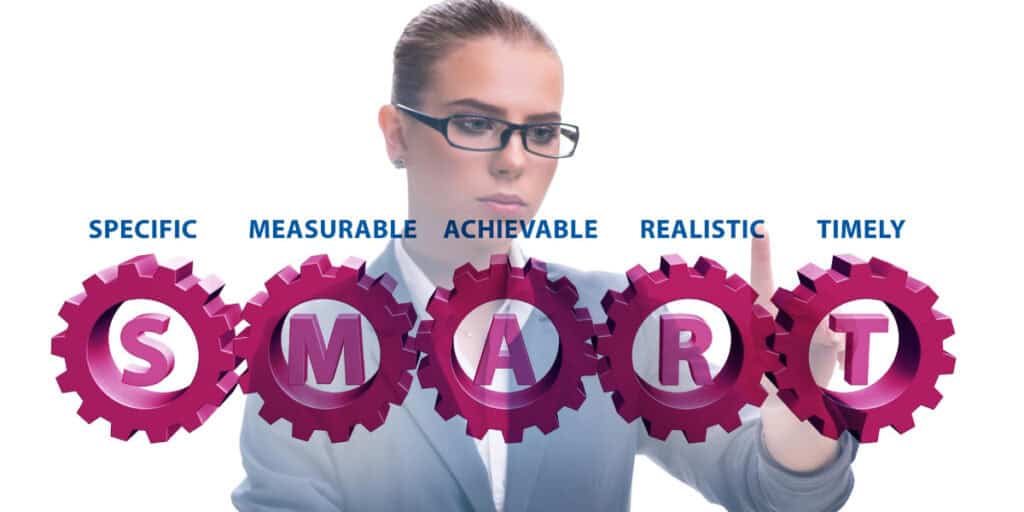Change management has become a critical success factor for any business that wants to remain competitive in the technology age. Though change is not easy, when implemented well, it can give you the flexibility of adapting fast to market dynamics. What should you do to ensure a successful change management transition?
The first thing that should happen during change management is defining the goal or need for change. You should decide what you want to change and weigh the opportunities against the tradeoffs to see if the change is worthwhile. Clear goals act as a roadmap towards visible results.
This article is yours if you want to learn all the things you should do during change management. It covers nine essential things you should not miss in your change management strategy. Read on to get a clear idea of what you can expect during change management!
1. Defining the Change Management Goal
Setting change management goals is like having a recipe for preparing your best Italian dish. Instead of guessing, you know what ingredients you need, which order to follow when mixing them, and the time required to cook each.
When defining a change management goal, you must first identify the need for change or why it is necessary. State the stakeholders and areas of your organization it’ll affect and set the implementation strategies. This gives you a vision and a roadmap to follow to achieve it.
Also, change is expensive. You need to thoroughly evaluate your goal to ensure the opportunity cost foregone is not greater than the benefit the change will bring. You should ensure your goal is SMART:
- Specific. It should not be general. It should state the exact thing you want to improve. Does it concern the organization’s culture, communication, or training process?
- Measurable. There should be a method of quantifying your results.
- Achievable. Your goal should be realistic and within your means to achieve it.
- Relevant. Your change management goal should align with the organization’s mission.
- Time-constrained. Your goal should have a timeline within which you should have attained it.

Benefits of Defining Change Management Goals
- It reduces the probability of failure. Change strategies are prone to failure without proper planning. But when you take the time to plan, you can identify possible pitfalls and take measures to avoid them.
- It eliminates confusion.A well-defined goal helps you communicate it easily to your subordinates. It also ensures everyone works in the same direction without conflict of interest.
- It helps determine and subsequently gather the resources needed beforehand.
- It improves liaison between the parties in charge of implementing the change.
2. Identifying Resources Required for Change Management
Resources are the key drivers of change management goals. Without them, achieving your goals will not be possible, however promising they’re. So, you’ll have to assess your organization to see if it has the input needed.
You should consider:
- Your financial position. Financial statements such as a profit and loss account and cashflows can tell you if you have enough money to fund the project. Cash is the most significant resource because it can help you buy or rent space, pay wages, and acquire other resources needed for change management.
- Expertise. Does the available labor force have the necessary skills to implement the change, or will you have to retrain or hire a new batch?
- Equipment. What special tools, hardware, and software will you need while implementing the change strategy?
- Time. Time is a resource measured in terms of other resources, such as labor. You should consider how long it’ll take to achieve your change management goals.
3. Introducing the Change Management Plan to Employees
Once you have the goal set and resources identified, the next thing to do is prepare stakeholders for change through communication. How you communicate your ideas can make or break the change management implementation. Your aim should be to persuade the employees to recognize and understand why change is necessary.
To overcome communication barrier, you should ensure your message is:
- Compelling. Because it’s the employees who’ll do much of the groundwork, your message should start by addressing the pain points concerning their work which the change management will address. This will create a rapport and keep them engaged.
- Clear. Your message should be well-defined and simple to understand. It should state what needs to change and its personal and organizational effects.
- Credible. Building trust opens a door for employees interacting with you to understand better the motivation behind the change. You should communicate in a trustworthy manner.
Tips To Keep Employees Engaged When Communicating About Change
- Communicate change management from the top down. Significant change needs top leaders’ consistent commitment and involvement to help model and oversee implementation.
- Communicate the reasons for change without hiding what’s happening behind the scenes. An honest approach eliminates suspicion and shows respect and value for your employees.
- Give a step-by-step guide on how change management will take place. A clear explanation of what employees should expect makes them more comfortable with the process.
- Be open about your expectation to prepare the employees psychologically. Also, be honest if there’s any reward for them.

4. Dealing With Conflict
Change, whether good or bad, sounds scary when you get used to a particular way of doing things. So, when introducing your change management intentions, be sure some employees will rebel. They’ll feel threatened and find creative ways to push back and hold on to the norm.
Instead of using threats and other manipulative strategies, you should use the following methods to deal with resistance in change management:
- Determine the root cause of resistance. Begin by identifying the groups resisting change and the possible reasons they’re fighting change management. Once you do, hold interactive workshops to address their concerns and to help them process the reason for the change.
- Listen to employees. An important aspect you should not overlook when implementing change is listening to employees’ feedback. After all, they’re the ones who’ll actualize the change strategy. Listening to them can provide you with insights into improving performance. Also, you motivate them by incorporating their ideas into the change process.
5. Aligning Teams With Change Management Strategy
Once everyone in the organization buys the change management idea, the next thing that should happen is aligning teams through training the seniors and the subordinates. The training aims to reduce the risk of adverse outcomes due to restructuring processes. It also helps to equip employees with necessary soft and hard skills to build confidence when completing assigned tasks.
To ensure your change management training is successful, you should:
- Choose a flexible training method. Training for change management can take various forms depending on your goals and the number of trainees. When introducing new systems, you may need instructor-led virtual or physical training. If you are advancing on existing processes, you can use pre-recorded videos, webinars, or live streams.
- Train slow. Though a one-time massive training can effectively save time, it may fail in the knowledge retention of trainees. To avoid this, you should roll out shorter training sessions, followed by learning materials and job aids.
- Ensure the training sticks. Training should be a continuous process to reinforce the lessons learned. After training, you should form team networks that regularly discuss the change process and work through challenges with their leaders.
Benefits of Change Management Training
It Increases the Chances of Change Management Success
Around 70% of change management initiatives fail due to employees’ negative attitudes and unproductive management strategies. Training ensures managers are on board with change as they set behavioral standards while helping employees to understand the need for change. This promotes teamwork as everyone will be working toward a similar goal.
It Gives Employees a Sense of Belonging
Training gives employees visibility by empowering them to contribute to the company’s goals and strategies. It eliminates confusion because everyone knows their role and can perform it with confidence. Training also increases engagement and reduces the chance of employees shifting to other employers.

6. Defining the Chain of Command
A chain of command is an organization’s hierarchical structure that defines every member’s roles from top to bottom. It promotes effectiveness and accountability by defining how information flows. Without it, the success of change management fizzles away. Before implementing change management, everyone should know to whom they’re answerable.
A successful chain of command consists of:
- A steering committee. This is the central body responsible for ensuring the change management succeeds. Its members are responsible for planning and implementing change management, making leadership changes, and aligning the change process to the company’s vision and mission.
- Change sponsor. This person oversees and is directly accountable for the change. It could be a senior representative who allocates resources and controls expenditure. They must enjoy greater authority and responsibility as they’ll have to gather commitment and support from other leaders and deal with all challenges along the change process.
- Change agents. They manage and coordinate the day-to-day activities by offering needed support and expertise. The change teams establish an operational framework and ensure the task force adheres to it.
- Workstreams. This is the group at the bottom of the hierarchy. It is accountable to the change agent and has to complete specific project tasks within a given timeframe.
7. Implementing Change Management
This stage involves actualizing the change management. It requires breaking the change management goal into small pieces of tasks first. The tasks should be in the order of how they’ll follow each other and have timelines or deadlines within which you should have completed them.
Nowadays, project management tools like Monday.com help managers track progress to increase the probability of success.
After creating a list of tasks, it’s time for the rubber to hit the road. The change sponsor and agent assign duties to the workstream and define the decision-making process in case of workflow difficulties. Reinforcement follows to motivate employees to continue transitioning their attitudes and behavior to the new paradigms.
During the transition, staff will have many questions that training could not answer. The reinforcement model should aim at supporting teammates regularly until they master the change. Once they adapt to the change, you can evaluate its impact.
8. Follow-Up and Evaluation
Follow-up is an invaluable task that allows you to predict if the change management will meet the desired goals. It tells you if people are doing the right thing. If they are doing the right thing, follow-up helps to maintain performance.
If not, it helps to improve performance by:
- Giving clarity on the goal.
- Removing obstacles.
- Working around personal limitations.
- Retraining where there is a knowledge gap.
- Letting them know what to prioritize.
To ensure your follow-up process is successful, you should review the following:
- Post-change functions. Make sure the post-change processes align with the change management goals and re-align them if they deviate from the core objective.
- Employee feedback. Give employees a voice by listening to their challenges when implementing the change and using feedback to improve processes.
- Leadership feedback. All leaders are resourceful in determining whether the change management implementation is working since they are responsible for the day-to-day management. They can help you identify skill and resource gaps that can boost performance.

What are the key elements that should be included in a change management policy?
When writing a change management policy, it is crucial to include clear communication strategies, a detailed action plan, and designated roles and responsibilities. Moreover, the policy should address potential resistance to change and outline methods for measuring the success of the implemented changes.
9. Analyze Change Management Results
The final step is analyzing the change management performance using key performance indicators (KPIs) to determine if it’s yielding the desired results. You can use quantitative and qualitative methods to gauge change management performance:
Quantitative measurements involve using statistics and hard data, which is accurate and hard to manipulate.
It considers factors such as:
- The number of people who have applied change in the workplace.
- The time it has taken for people to adapt to change.
- The level of success achieved since implementing the change.
The qualitative measure is more subjective and difficult to quantify. You can measure results using metrics such as surveys, quality assessments, and management reviews.
Sources
- New Zealand Management: How to identify when it’s time for organizational change
- TechTarget: Change Management Strategy
- ASAE: Preparing Your Staff for Organizational Change
- Emeritus: 12 Benefits of Training Employees in the Workplace
- Indeed: What Is a Chain of Command? (Definition and Explanation)
- Change Strategist: How To Deal With Resistance in Change Management





